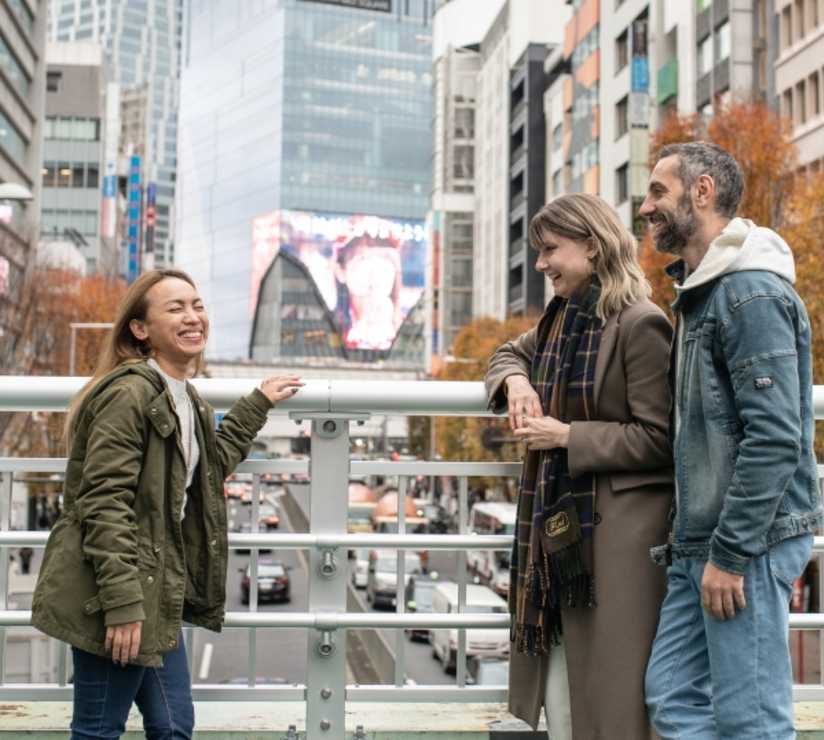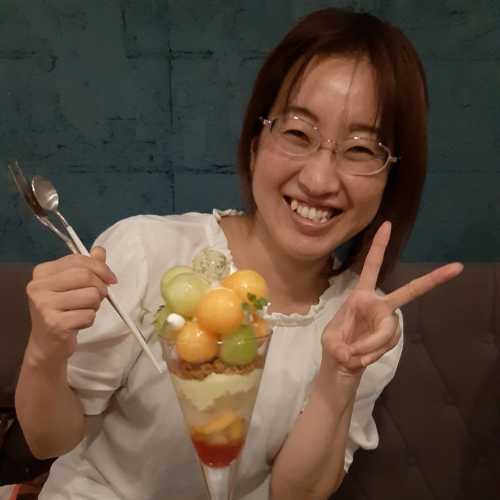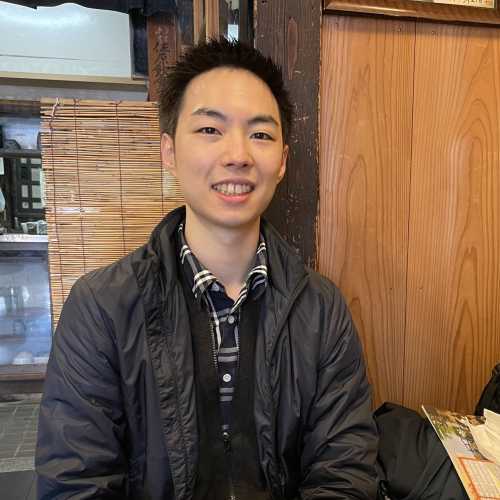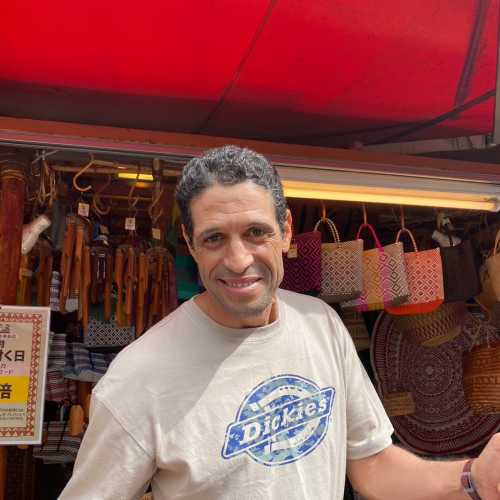Table Of Contents
- Introduction to Tokyo’s Anime Scene
- Starting Your Journey in Akihabara
- Exploring the Ghibli Museum and Studio Ghibli Magic
- Suginami Animation Museum: Behind the Scenes of Anime
- Pokémon Center Adventures Across the City
- Sailor Moon Sacred Sites Tour
- Anime and Manga Shopping Districts Beyond Akihabara
- Real Life Anime Locations Throughout Tokyo
- Hidden Anime Cafés and Themed Restaurants
- Tokyo Tower and Tokyo Skytree for Anime Fans
- Gaming and Arcade Culture
- Exploring Tokyo Bay and Beyond: Waterfront Anime Adventures
- Day Trips: Hot Springs and Nature Escapes
- Street Food Adventures with Anime Connections
- Tokyo Dome and Surroundings
- Seasonal Events and Festivals
- Enhancing Your Tokyo Experience: Insider Tips and Tricks
- Making the Most of Your Tokyo Anime Adventure
Introduction to Tokyo’s Anime Scene
Tokyo is a city where Japanese culture pulses through every neon-lit street and tranquil garden, and nowhere is this more evident than in its thriving anime scene. From the futuristic silhouette of the Tokyo Metropolitan Government Building to the timeless elegance of Tokyo Tower, the city is a living canvas for fans of anime and manga. Whether you’re wandering through manga stores in search of rare finds, gazing out over Tokyo Bay on a scenic cruise, or marveling at the engineering marvels of Gundam Base Tokyo, you’ll find that Japanese animation is woven into the very fabric of daily life here.
What makes Tokyo truly special is its seamless blend of old and new. You can spend the morning exploring the whimsical worlds of the Ghibli Museum, then lose yourself in the electric energy of Akihabara’s anime shops by afternoon. The city’s passion for anime and manga is infectious, and every corner offers a new adventure; whether it’s a themed café, a pop-up event, or a hidden mural from your favorite series. If you’re ready to dive into the heart of Japanese pop culture, Tokyo is the ultimate destination for anime lovers.
Starting Your Journey in Akihabara
The Akihabara neighborhood remains the beating heart of otaku culture, earning its nickname as Tokyo’s "electric town" for its vibrant, entertainment-focused atmosphere. While you’ll still find the massive electronics stores, the real magic happens in the smaller spaces tucked between the main drags.
Head to Radio Kaikan first thing in the morning when it’s less crowded. The building houses multiple floors of specialized shops, each with their own personality. Floor three has some of the best vintage figures I’ve found anywhere, including rare pieces from series that never made it big overseas. Many stores here also offer anime related goods, from character merchandise to collectibles.
Don’t miss the back alleys behind the main Chuo-dori street. There’s a tiny shop called Mandarake Complex that locals know about, it’s where serious collectors go for doujinshi and limited edition manga that you won’t find in the big chains. The owner, an elderly man who’s been there for twenty years, knows the backstory of practically every item in his cramped store. Maid cafes are also a unique part of the Akihabara neighborhood experience, offering visitors a chance to enjoy themed dining and interact with staff dressed as maids, which has become a cultural landmark in electric town.
Looking for a private city experience in Tokyo?
Explore the city with a local who plans a private day just for you; no groups, no scripts.
Exploring the Ghibli Museum and Studio Ghibli Magic
The Ghibli Museum in Mitaka deserves more than just a quick visit. I recommend booking your tickets well in advance through Lawson convenience stores — they often sell out weeks ahead. The museum captures that whimsical feeling of stepping into a Miyazaki film, with original sketches, interactive exhibits, and displays that let you learn about the animation process behind Ghibli's iconic films, making you feel like a kid again.
What most visitors miss is the small café on the second floor. They serve themed meals that change seasonally, and sitting there while sketching in one of the provided notebooks feels like something straight out of a Studio Ghibli film. The museum celebrates fans' favorite movies through themed exhibitions and attractions, and its gift shop offers exclusive merchandise only available at the museum.
After the museum, take a walk through Inokashira Park. The pond and surrounding paths appear in several Ghibli films, and during cherry blossom season, the resemblance to animated scenes becomes almost uncanny.
Suginami Animation Museum: Behind the Scenes of Anime
Tucked away from the usual tourist trails, the Suginami Animation Museum is a hidden gem that invites you to step behind the curtain of Japanese animation. This museum is a treasure trove for anyone curious about how their favorite anime and manga come to life. Through a series of interactive exhibits, you can trace the evolution of anime production—from hand-drawn cels to cutting-edge digital techniques.
Visitors are encouraged to get hands-on, whether it’s trying out voice acting in a real recording booth or experimenting with animation tools to create your own short sequence. The museum’s collection includes rare storyboards, original artwork, and memorabilia that offer a fascinating glimpse into the creative process. Regular workshops and screenings make each visit unique, and you’ll leave with a deeper appreciation for the artistry and innovation that define Japanese animation. For fans eager to go beyond the surface, the Suginami Animation Museum is an essential stop on your Tokyo adventure.
Pokémon Center Adventures Across the City
Pokémon Centers are dedicated merchandise stores that serve as the ultimate shopping destinations for Pokémon fans, with multiple locations across Tokyo, each offering something unique beyond the standard merchandise. The Pokémon Center Mega Tokyo is located in Sunshine City, a shopping center that houses a wide range of specialty stores and themed attractions. Here, you’ll find exclusive plushies and limited-edition items that rotate monthly.
The Pokémon Center Skytree Town, located near Tokyo Skytree, focuses on regional Pokémon and often has special events tied to whatever’s happening in the games or anime. I’ve caught some of my best finds here during their monthly clearance sales.
My personal favorite is the smaller Pokémon Center in Shibuya. It’s less touristy, and the staff often have insider knowledge about upcoming releases. Plus, you can combine your visit with a trip up to Shibuya Sky for those iconic Tokyo views.
What if your day in Tokyo was planned by someone who knows it — and you?
City Unscripted matches you with a local host who creates a private experience based on your interests, not a set route.
Sailor Moon Sacred Sites Tour
For Sailor Moon fans, Tokyo offers a treasure trove of real life locations from the series. Azabu-Juban, where Usagi supposedly lived, still retains much of its charm from the early 90s when the manga was first set there.
The Hikawa Shrine in Akasaka serves as the real-world inspiration for Rei's shrine. It's a functioning shrine where locals still come to pray, but Sailor Moon fans will immediately recognize the distinctive red torii gates and stone steps. Early morning visits feel especially atmospheric.
Azabu-Jūban itself has embraced its Sailor Moon connection. Several shops display character goods in their windows, and there's an annual Sailor Moon festival each August where local businesses participate with themed decorations and special menu items.
Don't forget to stop by the Azabu-Jūban shopping street. Game Machine Man, the arcade where the girls often hung out, was based on several real arcades in the area. While the specific arcade doesn't exist, you can find similar retro game centers that capture that same nostalgic feeling.
Anime and Manga Shopping Districts Beyond Akihabara
While Akihabara gets all the attention, Nakano Broadway offers a different kind of anime and manga hunting experience. The mall feels like a time capsule from the 80s, with narrow corridors packed with independent dealers selling everything from vintage manga to rare animation cels. On the ground floor, you'll find a variety of shops offering toys, second-hand goods, and accessible entry points to the rest of the building.
Mandarake’s main Nakano location spans multiple floors and specializes in harder-to-find items. The basement level focuses on adult-oriented manga, while the upper floors house vintage toys and collectibles that you won’t see anywhere else. Prices here tend to be more reasonable than in Akihabara’s tourist-focused shops.
For manga specifically, Book Off’s mega-stores in Shibuya and Shinjuku offer incredible selections of used volumes at fraction of retail prices. The ground floor of these stores often features a wide range of second-hand books and media, making it easy to browse for bargains as soon as you enter. I’ve completed entire series for less than what a few new volumes would cost. The Shibuya location has an entire floor dedicated to anime-related books and magazines, including rare publications from the industry’s early days.
Real Life Anime Locations Throughout Tokyo
Tokyo serves as the backdrop for countless anime series, and tracking down these real world locations featured in anime has become a hobby of its own. Your Name (Kimi no Na Wa) made the Suga Shrine in Yotsuya famous overnight, but the shrine maintains its peaceful atmosphere despite the increased foot traffic.
The stairs leading up to the shrine offer that iconic view of Tokyo’s skyline, especially beautiful during sunset. Local shrine keepers have embraced the anime connection, selling ema (wooden plaques) with Your Name designs.
Shibuya Crossing appears in practically every anime set in modern Tokyo, but experiencing it in real life still feels surreal. The best viewing spot isn’t from street level, head to the Shibuya Sky observation deck or the Starbucks overlooking the crossing for that elevated perspective you see in anime establishing shots.
For Tokyo Ghoul fans, the areas around Shinjuku, particularly the narrow alleys of Memory Lane (Omoide Yokocho), capture that urban atmosphere perfectly. These cramped yakitori stands and tiny bars create the same dense, layered cityscape that makes Tokyo feel so alive in anime.
Tip
We match you with the right host, not just any guide.Want to experience the real Tokyo with someone who lives there?
A fully private experience, planned and led by a local host who tailors the day to you
Hidden Anime Cafés and Themed Restaurants
Tokyo's themed café scene goes far beyond the obvious maid cafés. Gundam Café in Akihabara feels like stepping aboard a mobile suit, with detailed cockpit-inspired seating and menu items named after famous machines and pilots.
The temporary pop-up cafés deserve special attention. Tokyo regularly hosts limited-time themed cafés tied to new anime releases or anniversaries. These pop up in different neighborhoods and usually run for just a few months.
One of my favorite discoveries is a small café in Koenji that doesn't advertise its anime connections. The owner, a former animator, has filled the space with original production materials and sketches from shows he worked on in the 90s. It's the kind of place you stumble across rather than search for, and conversations with the owner often reveal fascinating industry stories.
Tokyo Tower and Tokyo Skytree for Anime Fans
Both Tokyo Tower and Tokyo Skytree are popular tourist attractions that appear constantly in anime as symbols of the city, but they offer different experiences for fans. Tokyo Tower maintains that retro charm that appears in older series, while Tokyo Skytree represents modern Tokyo’s skyline.
Tokyo Tower often hosts anime-themed events and illuminations. During my last visit, they were running a special Sailor Moon lighting display that transformed the tower into a magical girl wand after dark. The tower’s main observatory provides that classic Tokyo view that appears in countless anime establishing shots.
Tokyo Skytree’s higher observation decks offer a more modern perspective of the city. The view from here helps you understand Tokyo’s massive scale — something anime sometimes struggles to convey. On clear days, you can spot Mount Fuji in the distance, creating that perfect anime backdrop.
Both towers sell exclusive anime merchandise in their gift shops, often featuring collaborations with popular series. The items here tend to be unique location-specific goods that you can’t find elsewhere.
Gaming and Arcade Culture
Tokyo’s arcade scene connects directly to anime and manga culture, with many games featuring popular characters and storylines. Taito Station locations throughout the city offer different specialties, the Shibuya branch focuses on rhythm games, while the Akihabara location emphasizes UFO catchers filled with anime prizes.
Round1 Stadium in Ikebukuro spans multiple floors and feels more like an entertainment complex than a traditional arcade. The upper floors house private karaoke rooms where you can sing anime theme songs, while the lower levels feature the latest arcade games and prize machines. Big Echo Karaoke is another popular karaoke venue in Tokyo, known for its themed karaoke rooms and wide song selection.
For retro gaming, Super Potato in Akihabara preserves gaming history with rare cartridges and vintage consoles. Many classic anime tie-in games that never left Japan can be found here, along with the original systems needed to play them.
Ready to plan your perfect day in Tokyo?
Start your experienceExploring Tokyo Bay and Beyond: Waterfront Anime Adventures
Tokyo Bay is where the city’s futuristic spirit meets the calming embrace of the water, creating a playground for anime fans and pop culture enthusiasts alike. Start your adventure with a Tokyo Bay cruise, where you’ll glide past iconic landmarks and take in panoramic views of the city skyline, including the soaring Tokyo Skytree. The waterfront is home to Odaiba Seaside Park, a favorite backdrop for anime series and a perfect spot to relax or snap photos with the Rainbow Bridge in the background.
No visit to Tokyo Bay is complete without exploring Gundam Base Tokyo, where towering Gundam statues and exclusive plastic models await. The area buzzes with anime events throughout the year, from themed exhibitions at Tokyo Big Sight to special pop-up shops and character meet-and-greets. Dive into the countless shops and restaurants that line the bay, many offering limited-edition anime goods and themed menus. Whether you’re hunting for rare merch, attending a live event, or simply soaking in the vibrant atmosphere, Tokyo Bay is a must-visit for anyone looking to experience the best of anime and manga culture by the water.
Day Trips: Hot Springs and Nature Escapes
Even anime fans need breaks from the city’s intensity. Hakone, just 90 minutes from Tokyo, is famous for its natural hot springs and mountain scenery that appears in numerous anime series. The Hakone Open-Air Museum features sculptures set against mountain backdrops that feel like they could be from a Miyazaki film.
Several ryokan (traditional inns) in Hakone specifically cater to anime fans, with rooms decorated in anime themes and communal baths that overlook the same mountain views you see in series like Yuru Camp. Many ryokan also offer an open air bath, allowing guests to relax outdoors while enjoying the mountain scenery.
Kamakura, with its famous giant Buddha statue and bamboo groves, serves as inspiration for many anime backgrounds. The train ride there passes through landscapes that look like they’re straight out of slice-of-life series, and the coastal views provide a peaceful contrast to Tokyo’s urban density.
Street Food Adventures with Anime Connections
Tokyo’s street food scene offers tastes that appear constantly in anime. Takoyaki (octopus balls) from festival scenes become real when you visit actual matsuri throughout the year. The Kanda Festival and Sanno Festival, both official Tokyo events, recreate those lively festival atmospheres complete with food stalls offering local snacks and traditional games.
Shibuya’s Center Gai has evolved into a street food paradise after dark. The narrow alleys pack dozens of tiny stalls selling everything from imagawayaki (filled pancakes) to yakitori and other local snacks. It’s the closest real life equivalent to those late-night food adventures you see characters going on in anime.
Ameya-Yokocho Market near Ueno Station maintains that old Tokyo atmosphere where vendors still shout to attract customers. The market appears in several anime series, and walking through it feels like stepping back in time to post-war Tokyo.
Tokyo Dome and Surroundings
Tokyo Dome hosts major concerts and events that often tie into anime culture. Many voice actors hold concerts here, and anime music festivals regularly take over the venue. The surrounding Tokyo Dome City includes attractions like the Thunder Dolphin roller coaster, which offers unique views of the city while racing between buildings.
Attending a baseball game at Tokyo Dome is a must for visitors seeking a true Japanese cultural experience. The vibrant atmosphere during baseball games is unlike anywhere else, with passionate fans, coordinated cheers, and unique traditions. Even if you don't speak Japanese, you can still enjoy the excitement and energy of a live baseball game, soaking in the local spirit and camaraderie.
Tokyo Dome City’s shopping complex houses several anime-focused stores, including a large Pokémon Center and multiple floors of character goods. The area works well as a central hub for planning other Tokyo experiences, with easy access to multiple train lines.
Seasonal Events and Festivals
Tokyo’s seasonal events often incorporate anime themes, especially during summer festivals and autumn illuminations. Comiket (Comic Market), held twice yearly at Tokyo Big Sight, represents the largest gathering of anime and manga fans in the world. Classic series like Dragon Ball are frequently featured in cosplay and merchandise at these events, alongside other popular titles. Even if you don’t participate directly, the energy around the city during Comiket (Sat, 16 Aug 2025 – Sun, 17 Aug 2025) weekend feels electric.
Cherry blossom season transforms many anime locations into even more magical versions of themselves. Chidorigafuchi and Shinjuku Gyoen become those perfect hanami party locations you see in slice-of-life anime, complete with groups of friends sharing food under blooming trees.
Halloween in Shibuya has evolved into a massive cosplay event where thousands of people dress as anime characters, including iconic figures from Dragon Ball, and take over the streets. It’s chaotic but captures that community feeling that makes anime fandom special.
Enhancing Your Tokyo Experience: Insider Tips and Tricks
To truly unlock the magic of Tokyo’s anime scene, a few insider tips can make all the difference. Time your visit for cherry blossom season to experience the city at its most uniquely Japanese, parks and riversides transform into pastel wonderlands straight out of your favorite anime. When hunger strikes, skip the tourist traps and seek out small restaurants and bustling food stalls tucked away in local neighborhoods. Here, you’ll find everything from savory street food to hidden Japanese restaurant gems, each offering a taste of authentic Tokyo.
For anime merch hunters, don’t miss the legendary manga stores and specialty shops like Jump Shop or Mandarake, where you can score everything from exclusive figures to second-hand manga at unbeatable prices. Keep an eye out for limited-edition items and seasonal goods that you won’t find anywhere else. And remember, some of the best discoveries happen off the beaten path, so be open to exploring side streets and lesser-known districts. With a spirit of curiosity and these tips in hand, you’ll experience Tokyo’s anime and manga culture like a true local.
Making the Most of Your Tokyo Anime Adventure
The key to experiencing Tokyo as an anime lover is balancing planned visits with spontaneous discoveries. While the major attractions deserve their reputation, some of my best anime-related memories come from stumbling into small shops, striking up conversations with fellow fans, or finding unexpected references in everyday places.
Don’t miss a visit to the iconic Gundam statue, a must-see for fans and a true landmark for anime culture. For a shopping adventure, check out character street at Tokyo Station, where you’ll find a variety of anime-themed shops dedicated to popular franchises. Anime history enthusiasts should also make time for the Toei Animation Museum, which showcases the legacy and creative process behind beloved series.
Tokyo’s public transportation makes it easy to hop between neighborhoods and follow whatever catches your interest. A single day might take you from vintage manga hunting in Nakano to voice actor events in Shibuya to quiet shrine visits in residential areas where anime characters supposedly lived.
After a day of anime adventures, experience things to do in Tokyo at night at one of the city’s rooftop bars or treat yourself to an upscale bar for a unique view of the city and a memorable evening.
The city rewards curiosity and patience. That perfect figure you’ve been hunting for might be waiting in a small shop you almost walked past, or that location from your favorite series might reveal itself during an aimless walk through Tokyo’s endless neighborhoods.
Tokyo doesn’t just contain anime and manga culture, it creates it daily through the lives of millions of people who grew up with these stories. As an anime lover exploring the city, you become part of that ongoing creation, adding your own memories to the layers of fiction and reality that make Tokyo so endlessly fascinating.
What if your day in Tokyo was planned by someone who knows it — and you?
City Unscripted matches you with a local host who creates a private experience based on your interests, not a set route.
Want to experience the real Tokyo with someone who lives there?
A fully private experience, planned and led by a local host who tailors the day to you











